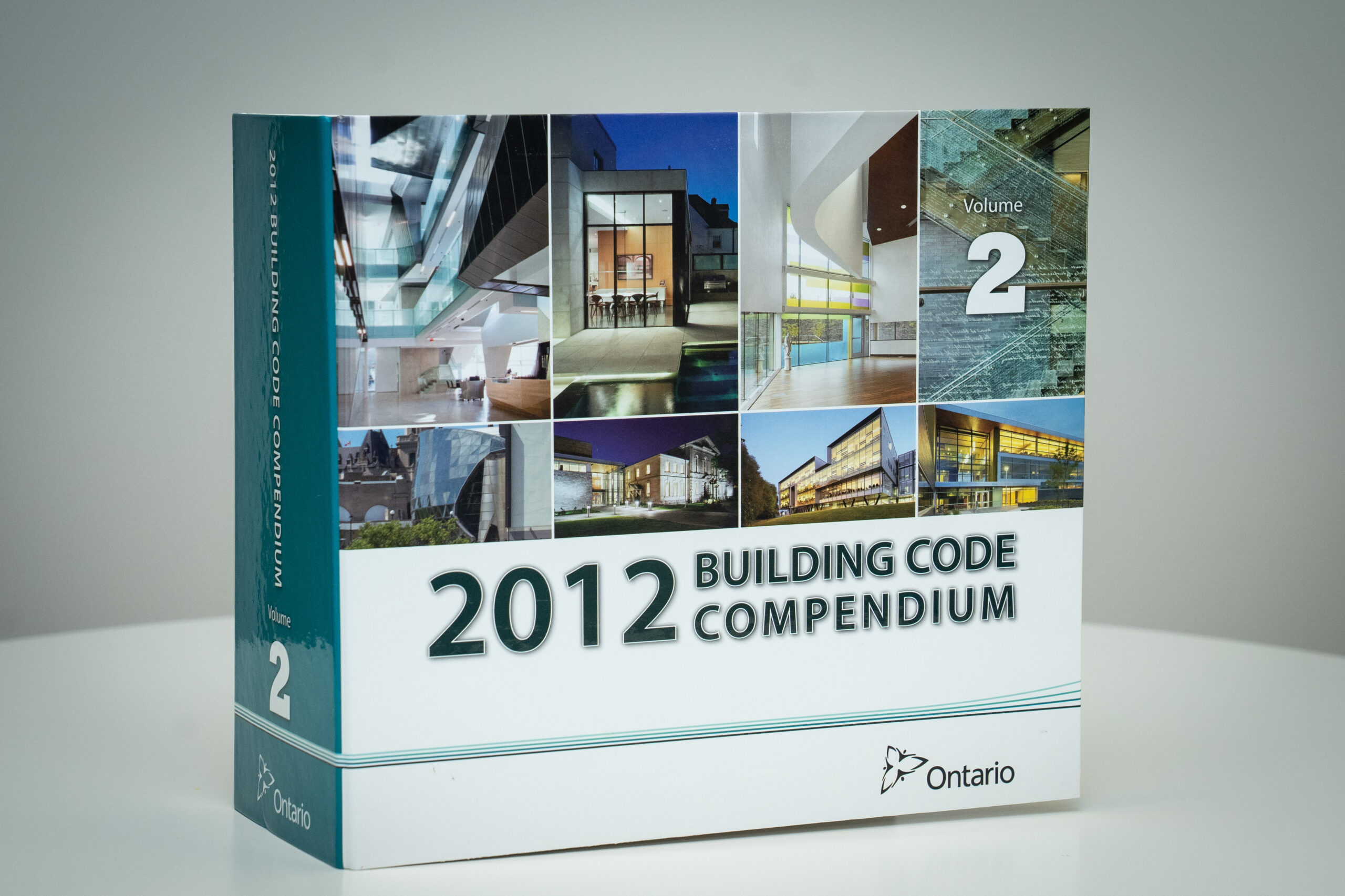The Ontario Building Code was modified on May 12, 2023.
These changes are aimed at improving construction efficiency, expanding construction possibilities, and harmonizing requirements for these buildings with the National Construction Codes.
A summary of the code revisions are as follows:
Construction of Exit Fire Separation: The fire separation of exit enclosures can now be of combustible construction. The fire resistance rating for the exit fire separation is reduced to 1 hour to match the fire resistance rating of floor assemblies in these buildings.
Cladding and Requirement to Face a Street: The recent changes in the Code have introduced two options for the requirement of these buildings to face a street, which subsequently affects the cladding requirements.
Option 1: A minimum of 10% of the building perimeter has to be within 15 m of a street or fire access route. In this case, the cladding on each exterior wall is required to be either:
- noncombustible, or
- combustible provided the wall assembly and cladding passes the flaming and heat flux criteria under testing to CAN/ULC S134, “Fire Test of Exterior Wall Assemblies”.
Option 2: A minimum of 25% of the building perimeter has to be within 15 m of a street or fire access route. In this scenario, up to 10% of the cladding on each exterior wall is permitted to be combustible without the need for a CAN/ULC S134 test. The remainder of the cladding (not less than 90%) on each exterior wall is required to be either:
- noncombustible, or
- combustible provided the wall assembly and cladding passes the flaming and heat flux criteria under testing to CAN/ULC S134, “Fire Test of Exterior Wall Assemblies”.
Essentially, if more of the building perimeter is within 15 m of a street or fire access route, there is some flexibility in the cladding requirements, allowing for up to 10% of the cladding on each exterior wall to be of any combustible material. It is also crucial to exercise careful attention to the material construction type requirements for the cladding as specified in Table 3.2.3.7. of the Code.
Reduced Fire Performance Requirements for Roof Coverings: Under the updated regulations, Class A roof covering is now mandatory only when the height of the building exceeds 25 m. This height is measured from the floor of the first storey to the highest point of the roof. For roofs with non-contiguous levels, each level of the roof can be evaluated separately for compliance with this requirement. Where the height of the roof is less than 25 m, the roof covering is permitted to be Class C. This Code change provides flexibility for buildings of a certain height, allowing for roof coverings with lower classification to be used. These requirements are also applicable to buildings of Encapsulated Mass Timber Construction (EMTC).
Exemption of Flame Spread Rating for Combustible Piping: The requirement for combustible piping in these wood buildings to have a flame spread rating of not more than 25 has been removed. Under the updated regulations, combustible piping is no longer required to have a flame spread rating.
Expanded Permitted Occupancies: Under the updated regulations, there has been changes to the location requirements for other major occupancies in these buildings. No changes have been made regarding the location of retail and assembly use major occupancies.
For residential buildings six storey wood buildings, Group A-2 (assembly use) and Group E (retail) major occupancies are still allowed to be located below the third storey, while parking garages are now permitted below the fourth storey.
For office buildings, Group A-2 (assembly use) and Group E (retail) major occupancies can still be located below the third storey, while storage garages are allowed below the fourth storey. In addition, Group F-2 (medium hazard industrial) and Group F-3 (low hazard industrial) major occupancies can now also be located below the third storey, expanding the potential for industrial and commercial buildings construction using wood.
Additional Changes:
There have also been changes to the requirement for standpipes in stacked townhomes. Stacked townhomes (up to 4 storey) designed to OBC 3.2.2.44 and OBC 3.2.2.45. do not require a standpipe system if:
- there are no public corridors or common areas,
- each dwelling unit is completely cut off from the remainder of the building so that there is no access to the remainder of the building, and
- each dwelling unit has direct access to the interior by means of an exterior door that is located not more than 1.5 m above or below the adjoining finished ground level.
An additional amendment to the Code allows for more flexibility in the design of footings for demountable stages and support structures. The footings for these structures can now be designed according to the provisions in Part 9 of the Code, rather than being restricted to Part 4.
If you have any inquiries or require assistance regarding these Code changes and their potential impact on future projects, please reach out to Vortex Fire Consulting Inc. We are here to help and provide guidance.

